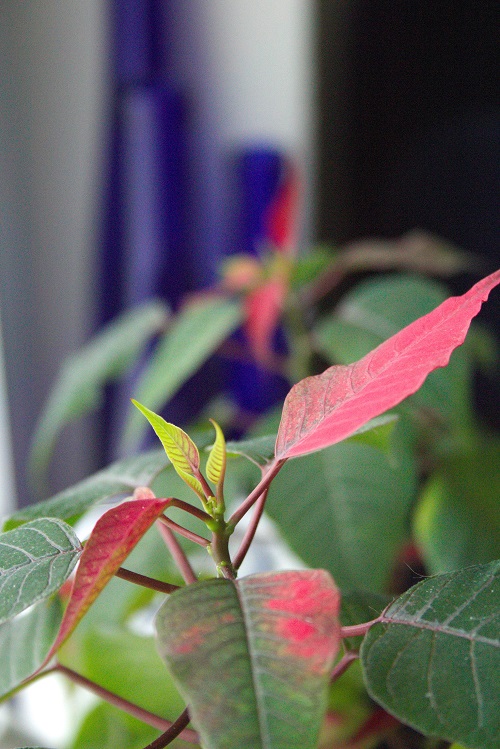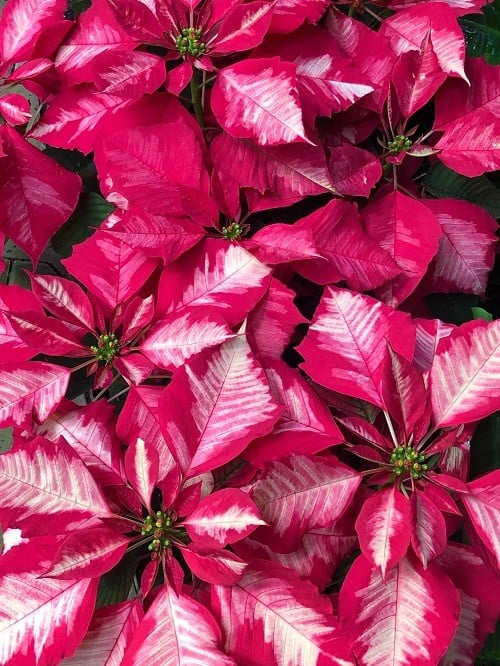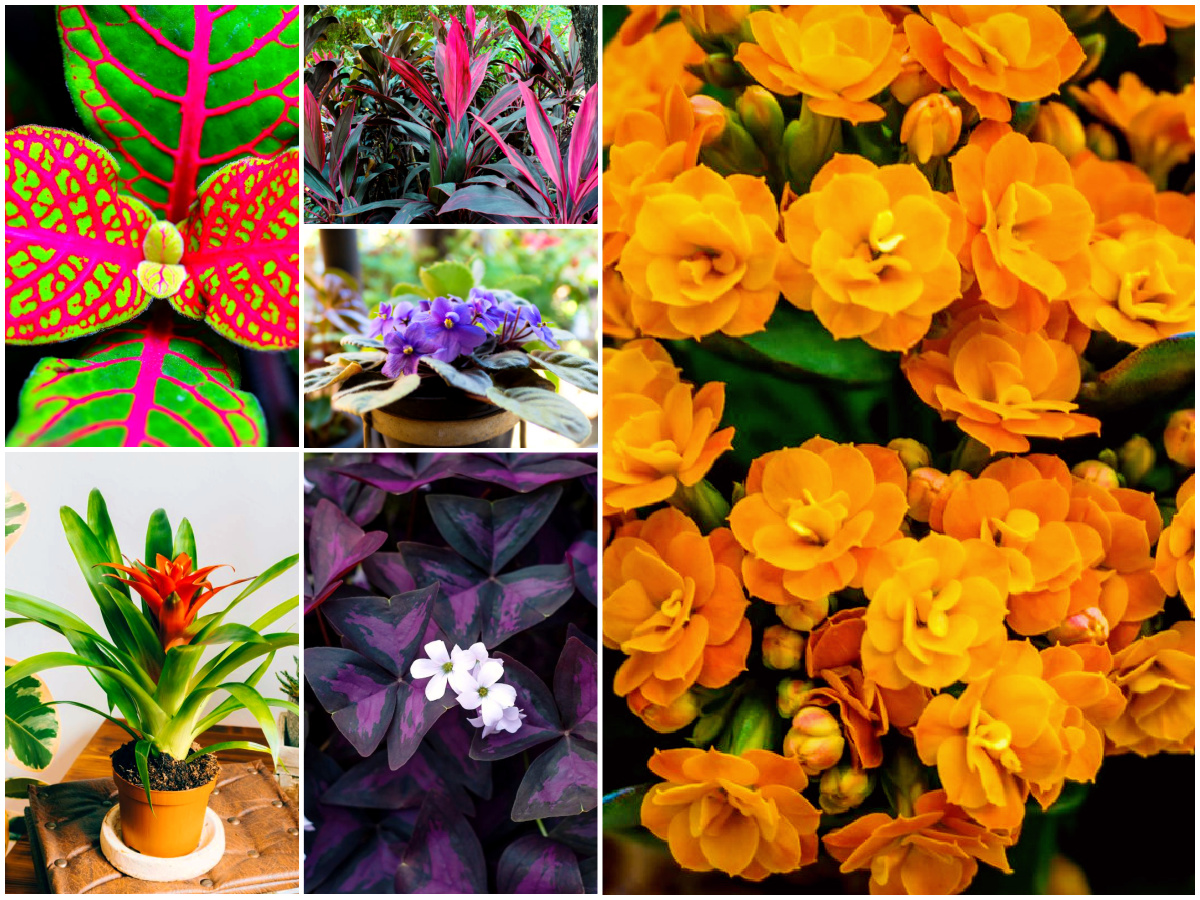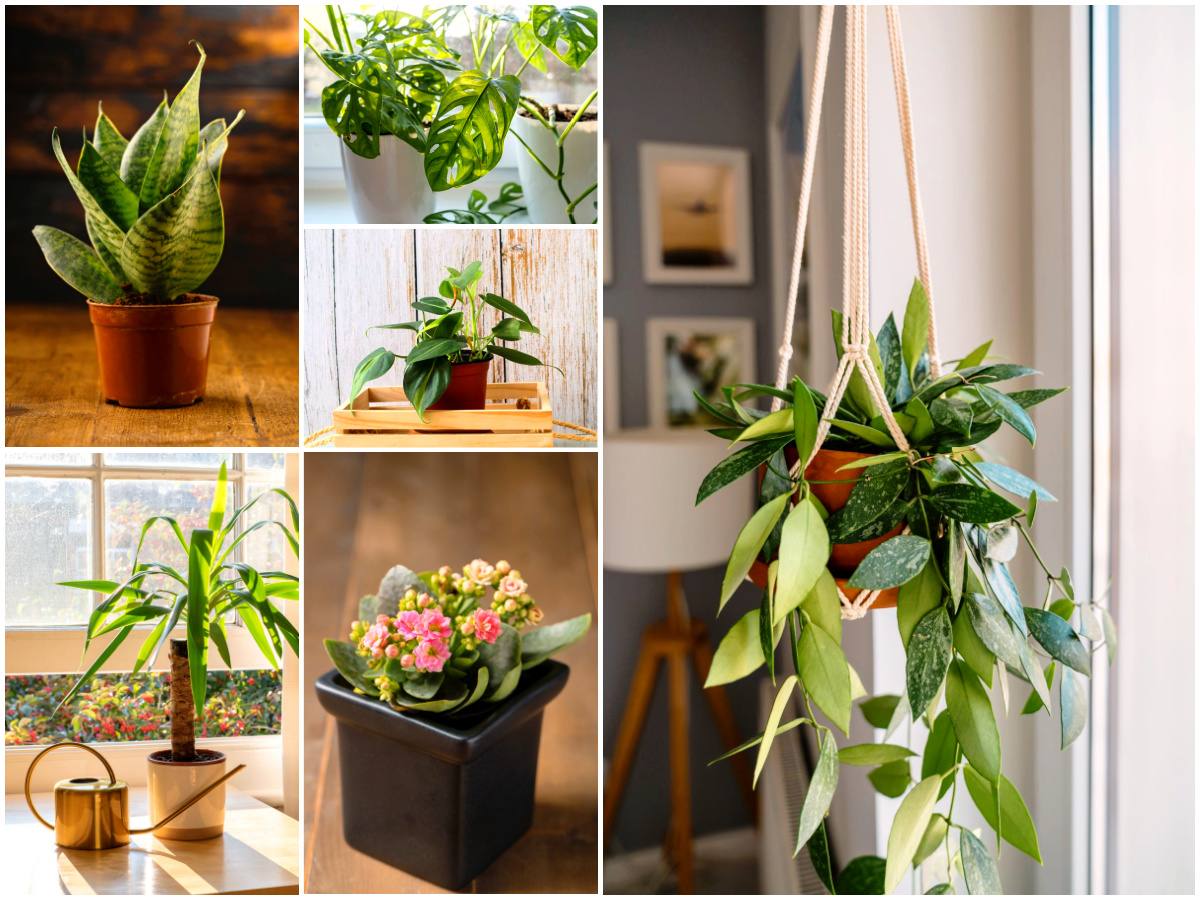If you’re looking to bring some color into your home during the gloomy December days, you might choose to bring home an Euphorbia pulcherrima, better known as Poinsettia. Not surprising: like the classic Christmas cactus, this plant has long been a Christmastime favorite. But how to care for a Poinsettia plant once the new year starts?
Caring for Poinsettias beyond the holiday season can be challenging, but it’s not impossible to keep them alive until the next blooming cycle.
Keep reading for everything you need to know about how to care for a Poinsettia plant!
| Name(s) (common, scientific) | Poinsettia, holiday plant, Mexican flame flower, Euphorbia pulcherrima |
| Difficulty level | Hard |
| Recommended lighting | Medium |
| Water | Let dry a little |
| Soil type | Well-draining |
Poinsettia natural habitat
Poinsettias are naturally found in tropical forests in Mexico and Central America, which have long yearly dry seasons rather than being rainforests. Here, they might occur as shrubs or even trees rather than the small houseplants we’re used to.
The Poinsettia’s natural habitat is threatened by deforestation, which is a pity, as the plant has a long history and cultural meaning.
Tip: The most important thing to remember about Poinsettia care is that it’s very variable, probably because it goes through a notable dry season in its natural habitat. That’s why so few houseplant enthusiasts have success with this species: the plant has differing needs throughout the year.

How to care for a Poinsettia plant: Location & temperature
Temperature requirements aren’t the same year-round, but be sure to avoid exposing this plant to frost at all times.
Figuring out the best location for your Poinsettia in your home can be a bit of a challenge. During the period leading up to the bloom, it requires bright daylight and long, dark nights.
When blooming, bright light is still appreciated but extra dark nights are no longer required (more information about making Poinsettias bloom can be found below).
From the blooming period until April or so, a cooler, darker location is preferred. After this season things start all over again and the plant can be moved back to a brighter spot.

How to care for a Poinsettia plant: Soil & planting
Poinsettias should be planted in a well-draining soil type. You can easily mix your own Poinsettia soil by combining a regular potting soil with perlite and a peat replacement like coco coir. Use a pot with a drainage hole to further improve drainage.
You can repot Poinsettias after their “dark period” ends and before the growth season starts, around April or May. When repotting, you can choose to move each Poinsettia stem to a separate container.
How to care for a Poinsettia plant: Watering
Like their other care requirements, Poinsettia watering needs vary throughout the year. During the blooming period, plenty of humidity and regular waterings are a good idea; water as soon as the top of the soil has dried out.
After blooming the plant drops most of its foliage and thus requires less water. It should be left to dry out significantly more, though never completely as this will quickly cause wilting. When the growing season starts and new leaves start to appear, go back to a regular watering schedule.
When the plant is growing and blooming, a humidity tray with a layer of pebbles and water can help improve humidity. If you’re running a humidifier for your plants your Poinsettia will appreciate being placed near it during this time of the year.

Feeding Poinsettia
Poinsettias don’t need fertilizer during their blooming time or the period without new growth that comes afterwards. In fact, using fertilizer during this time can have a negative effect.
Once new growth starts appearing in late Spring, you can feed every two weeks or so using a regular soluble houseplant fertilizer.
How to propagate Poinsettias
It’s not too difficult to multiply your Poinsettia: propagating these plants is usually done through stem cuttings. To take a cutting, all you have to do is cut the top off a healthy growing shoot using a clean knife or scissors. Make sure the cutting is at least about 3″ or 7.5 centimeter in length and has a couple of leaves.
Once you’ve obtained your cutting, you can choose to root it in water or soil. Water propagation allows you to see the plant’s roots develop and is quicker, while soil propagation is more hands-off because it doesn’t require you to pot up your new plant later.
To root your cutting in soil, you can dip it in some rooting hormone if you have it on hand. Then, just fill up a planter with normal Poinsettia soil and stick the cutting in there. You can place the whole thing in a clear plastic bag for a while to increase the humidity, but Poinsettia cuttings should root fine without this as well.

Making Poinsettia bloom
If all has gone well and your Poinsettia is still alive and happy after Summer, there is still no guarantee it will rebloom during the coming Winter unless you take some special measures.
As discussed earlier, during the period leading up to the bloom a Poinsettia needs long, completely dark nights in order to develop the leaf coloration it’s appreciated for.
This means completely dark; many sources report covering it with a box or bag during nighttime to prevent any light from reaching the plant is the way to go. During daytime do the opposite and make sure there is plenty of light available.
Once blooms appear, covering the plant at night is no longer necessary.
Buying Poinsettia
During the weeks leading up to Christmas, Poinsettias are available in probably all plant stores and garden centres as well as many supermarkets and other non-plant shops. Outside of the season you’ll most likely have a difficult time finding them anywhere.
Is Poinsettia toxic to cats and dogs?
Poinsettias are widely believed to be highly toxic to cats, dogs and even humans. However, luckily this is not actually the case.
Although the plant’s milky white sap is a skin irritant and ingestion can sometimes cause vomiting and diarrhea, there is no need for panic if your beloved pet chews on a few leaves. To avoid problems, try placing your Poinsettia in a hard-to-reach spot.
Cover photo: poinsettia by Amy the Nurse





